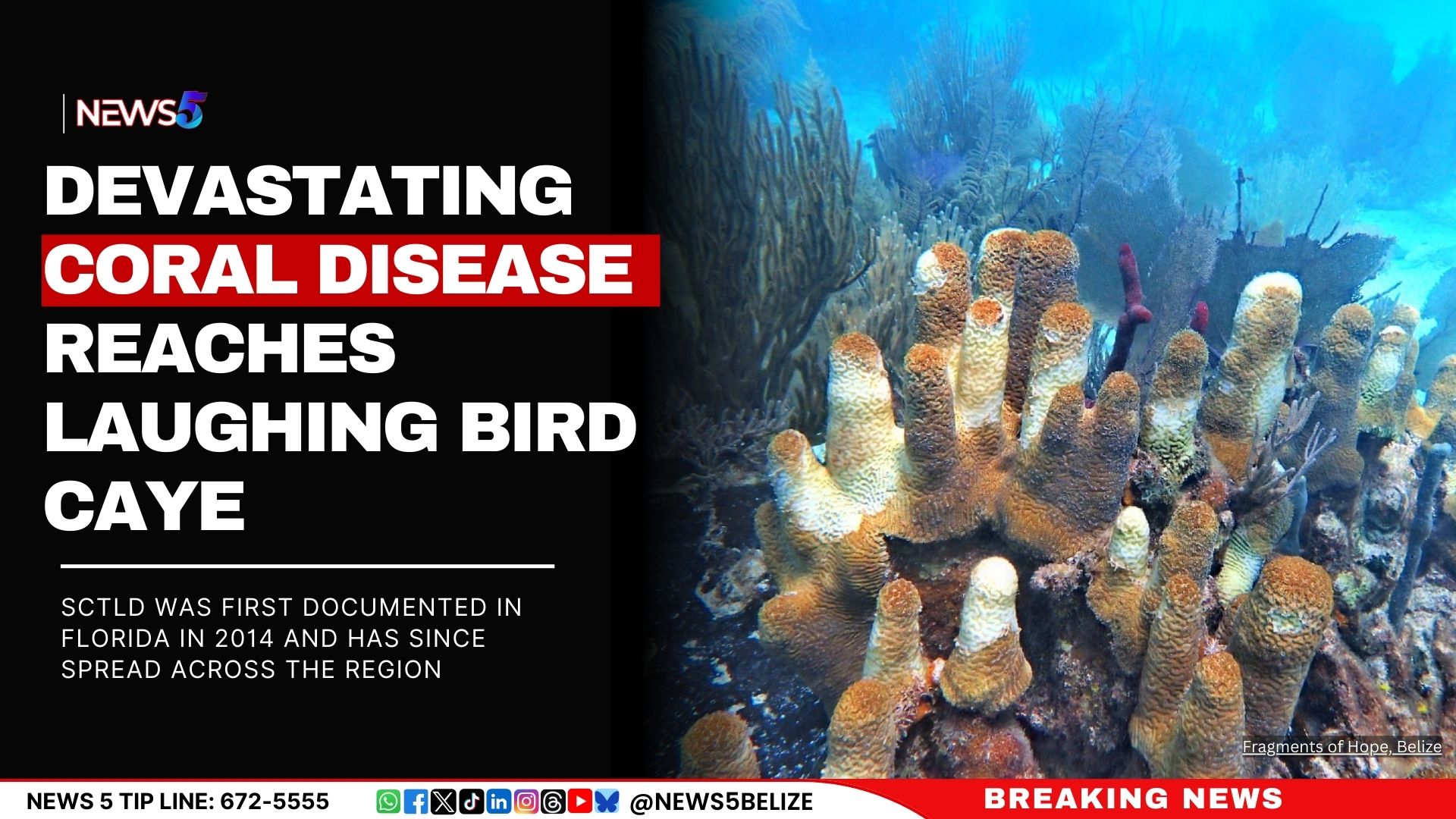The last known wild pillar corals at Laughing Bird Caye National Park, a UNESCO World Heritage site, have now fallen victim to a deadly and fast-moving disease that has been decimating reefs across the Caribbean.
Stony Coral Tissue Loss Disease (SCTLD) has finally reached the park.
SCTLD was first documented in Florida in 2014 and has since spread across the region, killing over 90% of coral in some areas. It was first reported in Belize in 2019 and has been steadily moving south along the Belize Barrier Reef. Its arrival at Laughing Bird Caye in 2025 marks a deeply worrying development, especially after some of the park’s corals had survived bleaching events in both 2023 and 2024.
“It’s bad. It kills corals so quickly. It’s faster than any of the other diseases we’ve seen,” said Melanie McField, Executive Director of Healthy Reefs for Healthy People.
The disease is relentless, highly contagious, and affects over 26 species of hard coral—many of which are key to reef structure and marine biodiversity. Once infected, corals exhibit rapid tissue loss, revealing their white skeletons before dying entirely.
“It’s terrible. It’s really bad. It’s really awful. So it’s been devastating for the entire Caribbean,” echoed Lisa Carne, founder of Fragments of Hope.
Researchers believe SCTLD may have spread via ballast water from ships or by attaching to biofilms on ship hulls. Its origin is closely linked to environmental disturbances near the Port of Miami, including dredging, coral bleaching, and leaking sewage pipes.
Efforts to contain the disease have been exhaustive but limited by time and resources. Organizations like Fragments of Hope, Belize Audubon Society, TASA, and the University of Belize are at the frontlines, treating infected corals with an antibiotic paste made from amoxicillin.
Victor Faux, site coordinator for Fragments of Hope, has personally treated over 600 corals. “I do see that the treatment has been working to some point where it stopped the disease, but it’s not a fix… The coral can still be re-infected,” he said.
The challenge is vast. During a monitoring mission at Lighthouse Reef Atoll, Gabriela Ugarte of the Belize Audubon Society reported that out of 4,000 coral colonies surveyed, 16% were infected and 11% had died completely. “We focused our treatment efforts on hotspots near Half Moon Caye and the Blue Hole—areas critical for tourism,” she noted.
The disease’s spread is a direct threat to Belize’s Blue Economy, which heavily depends on healthy marine ecosystems for tourism and fisheries. According to Minister of Blue Economy Andre Perez, “Tourism and the fishing industry are major contributors to the GDP. We must find a balance that preserves our waters for generations to come.”
Without healthy corals, the reef cannot survive. And without the reef, Belize’s shoreline, marine life, and the livelihoods of thousands are at risk.
“Only a living reef can break up wave energy,” Lisa Carne said. “Engineered shoreline protections erode over time, but living reefs grow and adapt.”
The ecological loss is also cultural. The last wild pillar corals at Laughing Bird Caye, once resilient symbols of survival, are now dying.
